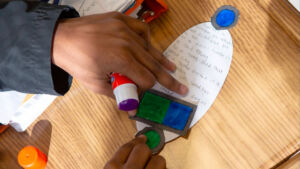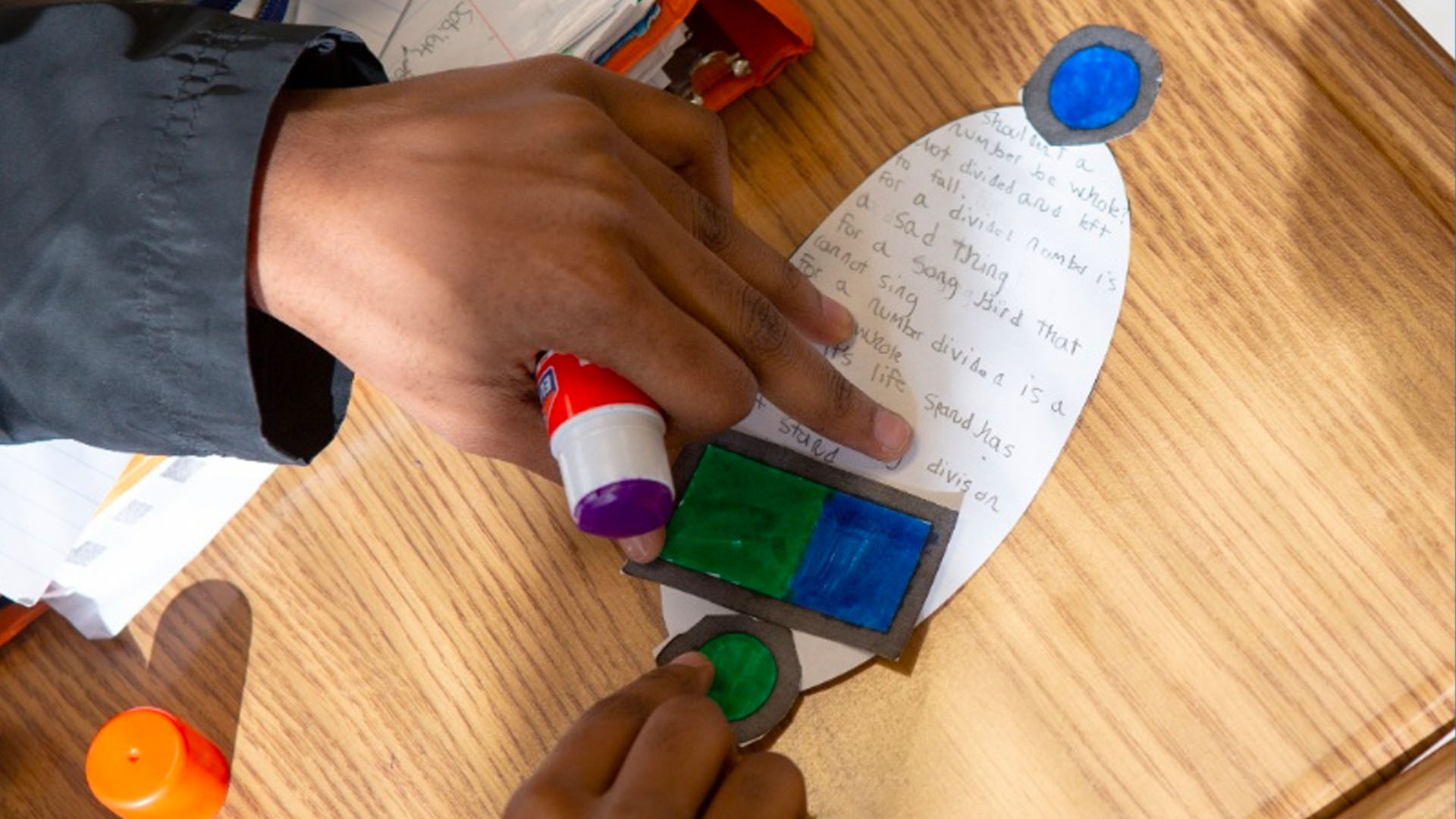
Like many math teachers, I started out teaching the same way I was taught— reducing fractions, keep-change-flip, and lots of long division and shifting decimal places. About 10 years into teaching, I reviewed a new math curriculum while serving on our district’s textbook adoption committee. For the first time I realized there’s more than one way to do just about anything in math. And that math games and tools are for more than just practicing skills after kids are done with their regular work. Over the next several years, while gradually incorporating more purposeful math labs and games, more willingness to incorporate different strategies and representations, more opportunities for kids to talk about their thinking, I realized the buzz of energy and student thinking is really where the magic happens. When kids are sitting passively watching me do math, they’re not really thinking. It’s a bit like teaching them golf by having them watch me do it. And when they aren’t able to demonstrate understanding, just showing them again and again, maybe louder this time, doesn’t really work. Instead, we can tee concepts up for them by creating an environment where all kids have the chance to explore math ideas and have their own aha moments.
I realized the buzz of energy and student thinking is really where the magic happens.
But that doesn’t happen until we let them DO math, just as we don’t learn golf just by watching golfers. Doing math is what lets students see themselves as mathematicians— capable of taking risks, learning from mistakes, sharing ideas, and appreciating the ideas of others. If learners see math as a list of procedures to remember and perform in one correct way, most will check out of the subject at some point. If they think math is about performing calculations quickly, or remembering a bunch of rules, they will miss out on the joy of exploring patterns and making discoveries. They’ll be more likely to see themselves as “not math people” and stop expecting math to make sense.
We are all math people capable of exploring and understanding complex concepts.
In this video, taken in Marc Dashiell’s classroom at Riverside Intermediate School, we see a student exploring triangle relationships with a geoboard. For this lab, fifth graders constructed various triangles and noticed similarities and differences between them. They experimented with different possibilities, such as whether an obtuse triangle must contain two acute angles, and shared and recorded their thinking. A learning experience that allows kids to use tools and play with mathematical ideas, as opposed to a traditional teacher-directed approach, is more engaging, meaningful, and accessible to all students. As professional educators, we are called upon to reflect on our practices and create better conditions for students to see themselves as capable learners of math. We are all math people capable of exploring and understanding complex concepts. Transitioning to a more conceptual approach, where kids DO math, talk about math, and stay curious about math, is not the flipping of a switch. It’s more like moving the needle. What teacher moves can we make today that positively impact students’ engagement with math for the future?
Resources
Please login or register to claim PGPs.
Alternatively, you may use the PGP Request Form if you prefer to not register an account.



